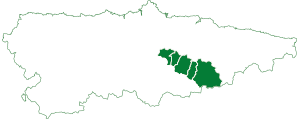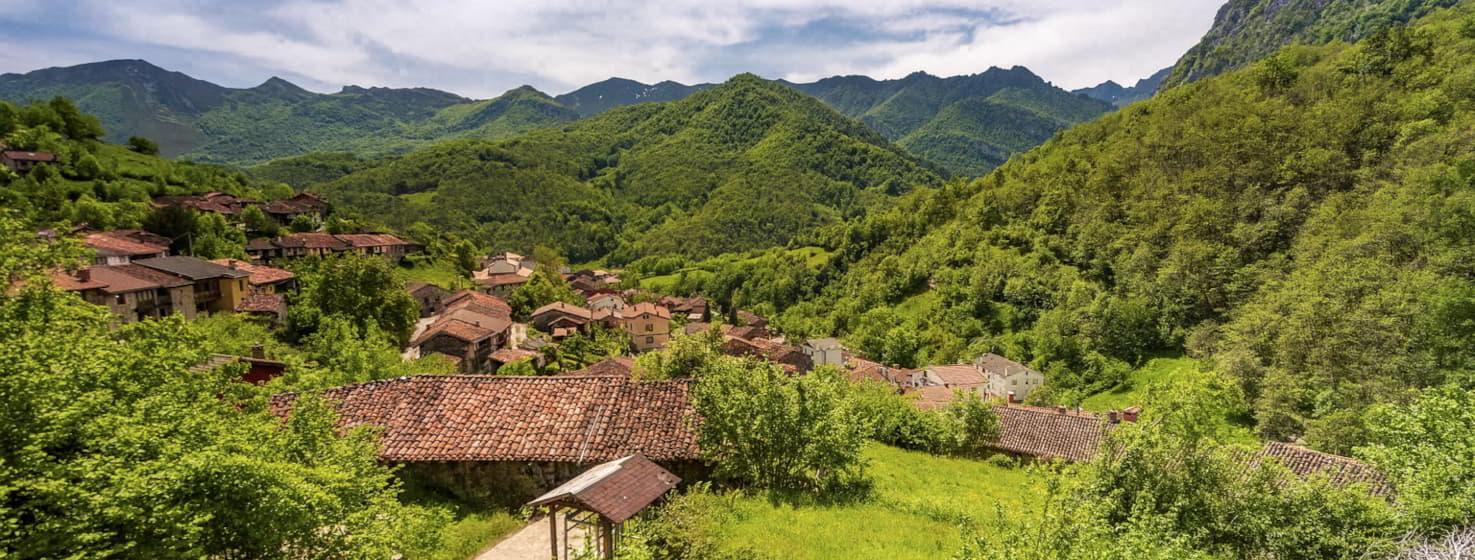
In this region, the land is fertile inside and out, as if nature had wanted to reward it with a double generosity. First on the inside, with the mining wealth that sustained an entire regional economy, and now on the outside, with green and natural landscapes that are being reborn thanks to a clean, technologically and environmentally friendly reconversion. The growing pull of the Redes Natural Park, at the head of the valley, is helping to transform this territory into a natural destination of the first order.
History and heritage of the Nalón Valley
The relief of the Nalón Valley is criss-crossed by a dense network of short but fierce rivers, impetuous torrents (all tributaries of the river Nalón) that have cut through the mountains and opened transversal valleys such as those of Candín, Barrero, Samuño, Villar, La Güeria de Blimea, Tiraña or Villoria. This type of landscape favoured mining on the slopes from the end of the 18th century, when the mines were opened directly on the flanks of the terrain. Later, the activity gradually moved down from the mountain to the valley. Vertical shafts then appeared and with them an increasingly complex infrastructure: derricks, chimneys, wash houses, hoppers, etc. A whole industrial landscape supported by a dense railway network that transported the coal to the ports and factories. It was not a picture-postcard landscape, but an epic landscape, where work left a deeper mark than the river.
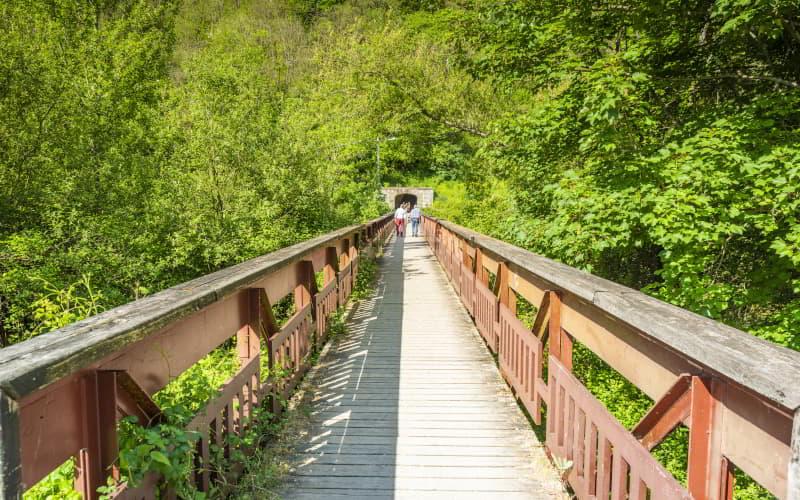
At the beginning of the 20th century, the Nalón Valley - together with the Caudal Valley - was already one of the great industrial engines of Spain. In Langreo alone there were more than thirty active mines. Companies such as Duro Felguera or Hunosa began to be the real backbone of the economic and social development of the region. Sama, La Felguera, El Entrego or Pola de Laviana grew in the heat of coal, feeding densely populated municipalities such as Langreo, San Martín del Rey Aurelio or Laviana.
Industrial heritage
With around 70,000 souls, the comarca is still one of the most densely populated in Asturias. The memory of coal also persists, embodied in speech, collective pride and the dominant workers' consciousness. Some of the old mining structures have been transformed into museums and interpretation centres of the valley's industrial heritage, bearing witness to a time, not so long ago, that refuses to disappear.
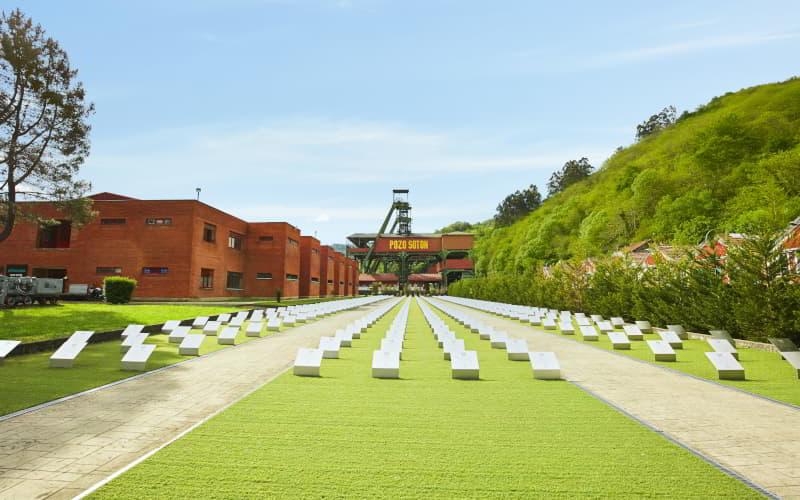
In El Entrego/ L'Entregu (San Martín del Rey Aurelio), in one of the cathedrals of old mining activity, the Pozo Sotón, visitors can descend into the bowels of the mine and feel what it was like to work six hundred metres underground. Nearby is the Museum of Mining and Industry of Asturias (MUMI), one of the most visited museums in Asturias, and to walk through its doors is to enter history with your boots on. Working in the mine is no longer an abstract idea but something physical: a pneumatic hammer, a cage, a carbide lamp. It also illustrates the struggles for control of the mines, the first technical achievements, or those moments of camaraderie that, underground, softened the harshness of the work.
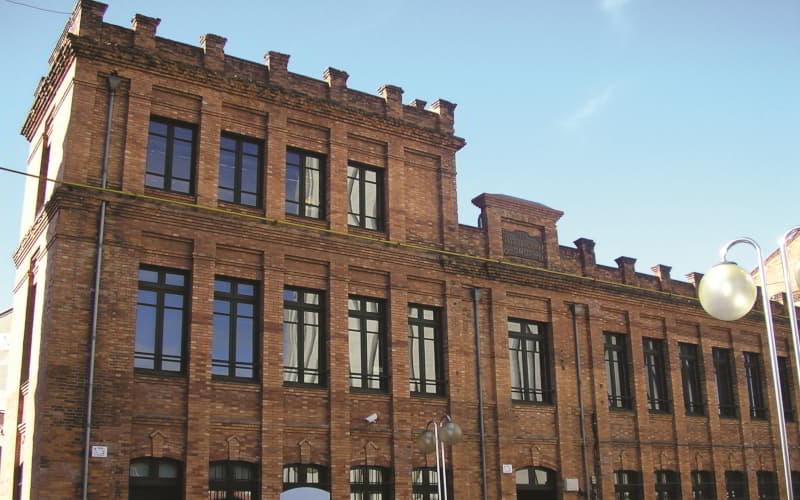
The fact that Langreo was declared"European Kilometre of Culture" in the sixties of the 20th century meant an important recognition of its intense intellectual, artistic and social life, at a time when it was not only producing coal and steel, but also ideas and important critical thought. Today, in this municipality, proposals such as the Samuño Valley Mining Ecomuseum in Ciañu stand out. Visitors can get on an underground train and enter an authentic gallery with the smell of coal and that persistent damp, the old equipment and working tools. A sensorial, didactic and exciting experience, which is ideal for the whole family as it combines history and adventure. Also in Langreo, in La Felguera, the Asturias Iron and Steel Museum (MUSI), located in the old cooling tower of the Duro Felguera factory, illustrates the process from iron to steel and life around the factory. The MUSI is the starting point for the Iron and Steel Route, which takes in landmarks such as the blast furnace, the engineers' chalets, old workshops and workers' dwellings.
Nature and landscapes of the Nalón Valley
The Nalón Valley is part of the Cuencas Mineras Protected Landscape - declared in 2002 for its ecological and industrial value. A landscape that totals 4,000 hectares recovered for the enjoyment of the local residents. The Nalón River Path, for example, is an itinerary that connects Laviana, San Martín del Rey Aurelio and Langreo, crossing old mining areas that have been converted into green zones, recreational areas, walkways and viewpoints. More than 20 kilometres of gentle route, ideal for walking, running or cycle touring.
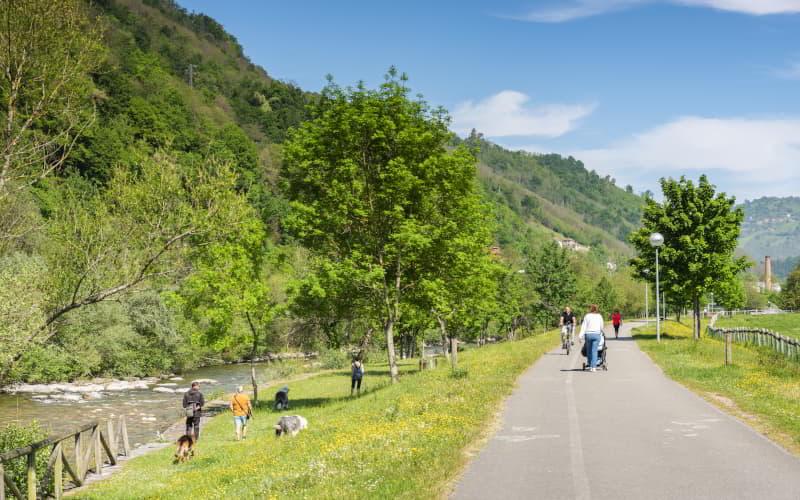
The Redes Natural Park
But the real green lung of the Nalón Valley is the Redes Natural Park, an area of untouched and beautiful nature. It extends through the councils of Caso and Sobrescobio. It was declared a Nature Reserve in 1996 and a Biosphere Reserve in 2001, as it is one of the purest and most representative enclaves of the Cantabrian ecosystem. Nature here offers a generosity that disarms the visitor. It is presented as a symphonic composition of limestone mountains, shady beech forests, fertile meadows and thousand-year-old brañas. It covers an area of almost 400 square kilometres. A rugged world in which more than 80% of the terrain rises above 800 metres. Its highest peak is Picu Torres ( 2,104 m), followed by other mythical peaks such as Tiatordos, Cantu l'Osu or Retriñón.
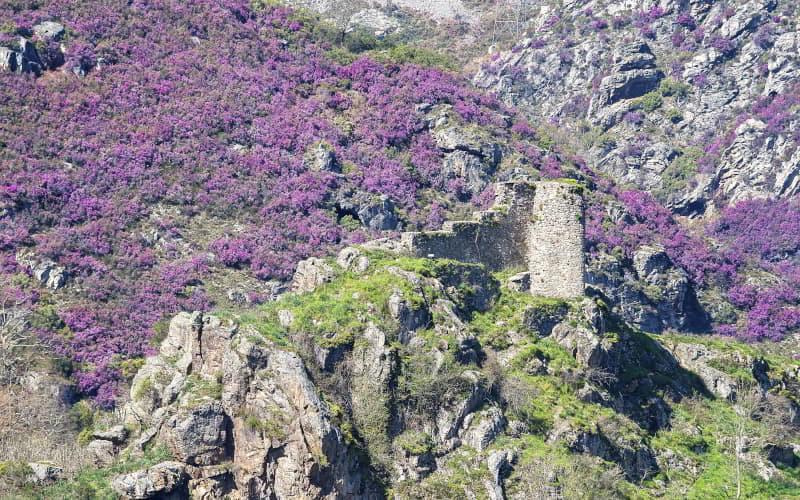
Redes is also a wild codex of the most luxuriant Asturias. It is home to beech, oak and chestnut groves that are hundreds of years old. Almost half of its surface area - it is not long to say: 40% - is covered by forest mass. To this must be added the high mountain vegetation that climbs unashamedly up to the cliffs or the high pastures where cows graze freely. And there is also the brown bear, the Iberian wolf, etc. . The golden eagle hovers in the air, and along the mountain paths men come across wild boar, foxes and the largest population of deer and chamois in the whole of Asturias.
But above all, Redes is water. A lot of water. It rains generously here: between 1,200 and 2,000 mm a year, as if the sky wanted to make sure that every tree gets its share. The Tanes and Rioseco reservoirs, which supply half of Asturias with drinking water, live off this abundance of water.
Routes through the Redes Park
Just as water is the guiding thread of a geography that rises in crystal-clear springs, meanders in streams, flows in reservoirs or sleeps in lakes, the paths could also be diverse channels that wind their way through the mountains. From the simplest and most familiar to the most demanding and alpine, Redes has a "cascade" of routes:
La Ruta del Alba (Sobrescobio): An excursion on the rise, one of the busiest in Asturias and suitable for the whole family. All you have to do is follow the course of the river Alba through riverside woods, crystal-clear water pools and several waterfalls. The walls of the gorge will gradually close in on the Foz de Llaímo.
At a slightly higher altitude, the water drops and becomes vertical. This is the Tabayón del Mongayu (Caso), a waterfall that falls as if the mountain were weeping with emotion. The path that leads to it requires a little more breath, but it is equally suitable for everyone.
In Brañagallones (Caso) the water backs up, opening up like an unexpected plain between mountains. The climb up to this point requires trained legs, an excursion of medium difficulty for a full day's route. The best reward is the pastoral arcadia that we will reach.
Lake Ubales (Caso): we must go to find the water at the highest point, where it takes the form of a glacial lake, at an altitude of 1,690 metres. We must put on good boots and face a long, medium-high level walk, with steep slopes.
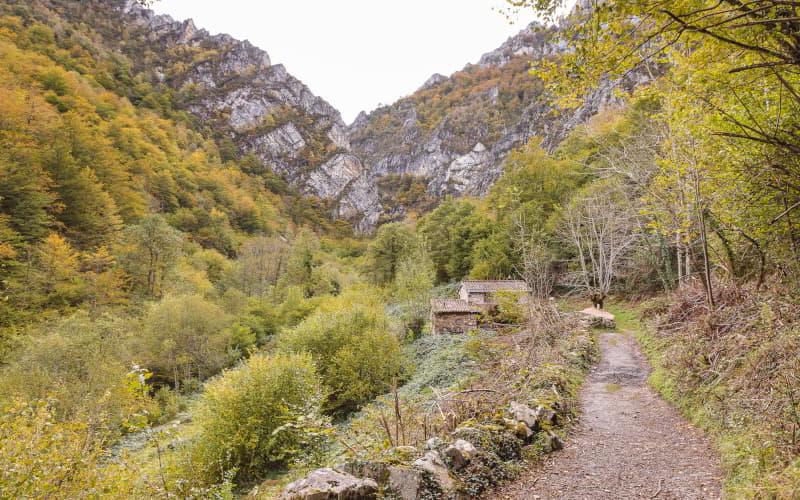
The Arrudos Gorge (Caso), one of the great river canyons of the Principality. The landscape becomes a gorge and we "slide" between vertical walls. One of the most beautiful and demanding routes in the park.
And if there is still strength left, the greatest challenge arrives: the Tiatordos (Caso), known by mountaineers as "the perfect mountain". The ascent demands body, mind and will. It is the route for those seeking not only scenery, but also a challenge.
From this summit the Nalón looks like a silver thread, although at the bottom it is a big river, the longest in Asturias. It still has 150 kilometres of adventure ahead of it until it reaches its mouth.
Tips to enjoy the Nalón Valley
From Oviedo/Uviéu or Gijón/Xixón, it can be easily reached by the AS-17 (known as the Autovía del Nalón) in just 30 minutes. You can also get there by local train.
To visit the Nalón Valley is to open a calendar that changes with the seasons, each one offering you a different way of enjoying the landscape, the culture or the gastronomy. Spring is a literal awakening. The rivers flow in flood, the mountains become green and the villages wake up after the winter. It is the perfect time to discover the Redes Nature Reserve. The Alba Route is at its best and the Tabayón del Mongayu becomes more spectacular with the thaw. The Redes Park Interpretation Centre (Caso) or La Casa del Agua (Sobrescobio) give us a complete overview of this unique place. The surroundings of Rioseco/Rusecu, the beautiful capital of Sobrescobio and its reservoir, are a paradise for birdwatchers. In the hamlet of Veneros, the Museum of Wood tells us about the importance of this raw material in the rural world and also the legendary "madreñas", footwear made entirely of wood to protect the foot from mud and damp. It is always a good idea to visit Laviana, the birthplace of Armando Palacio Valdés, and an ideal place to learn about the gastronomy of the area with its Cabritu Gastronomic Days ( March).
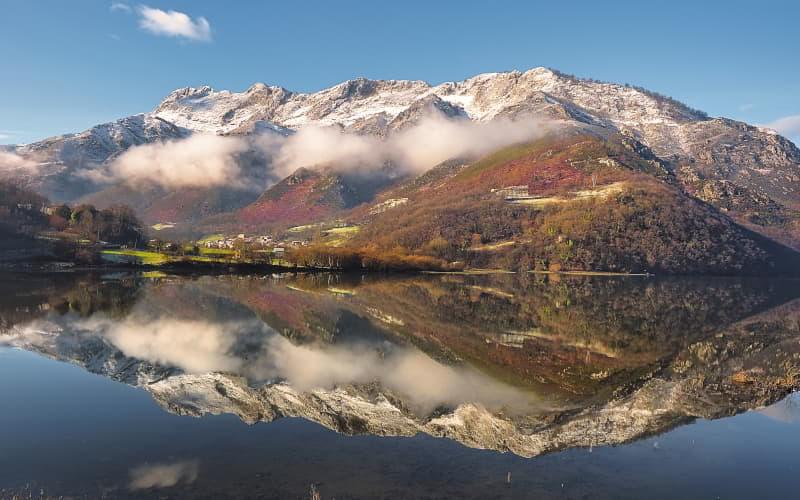
In summer, the Nalón becomes the scene of patron saint festivals, livestock fairs, open-air festivals and shared gastronomy, with cider as the main protagonist. But if there is one unmissable event, it is the Descenso Folklórico del Nalón, on the third Saturday in August in Pola de Laviana. This aquatic and carnivalesque pilgrimage has been declared a Festival of National Tourist Interest, and with good reason. Crazy boats full of humour go down the river pushed by the participating peñas.
The Certamen del Queso Casín, in El Campu (Caso) on the last weekend in August, brings one of the divinities of the Asturian palate within reach. A cheese with a strong flavour and unmistakable personality, with Designation of Origin, which is so old that it is lost in legend, to the point that it is said that Don Pelayo received one so huge that it was transported in a cart from the country.
Every 8th September, Langreo celebrates its great festival at the Hermitage of El Carbayu, a genuine traditional Asturian pilgrimage that mixes folklore, puya'l ramu and food on the prau.
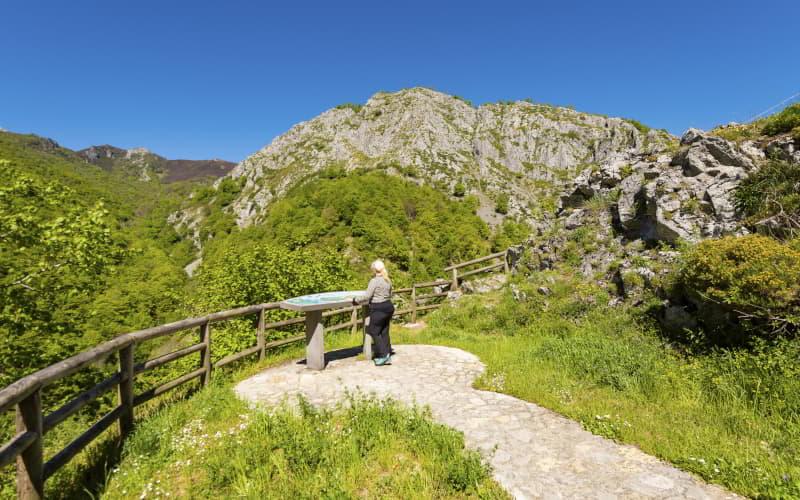
Autumn is perhaps the most magical season in the Redes Park. It is the time to lose yourself in its forests. The beech forests are tinged with ochre, gold and reddish tones. And among the crunchy leaves and the freshness of the air, the ancestral bellowing of the deer - which we can witness live if we sign up for organised routes - resounds. To be even more amazed by the autumnal mantle of Redes, we can climb the Tarna pass, with marvellous views of the Alto Nalón and the whole park. In this emblematic corner of the Asturian mountains, we will come across the essence of the valley: the Fuente La Nalona - source of the river Nalón -.
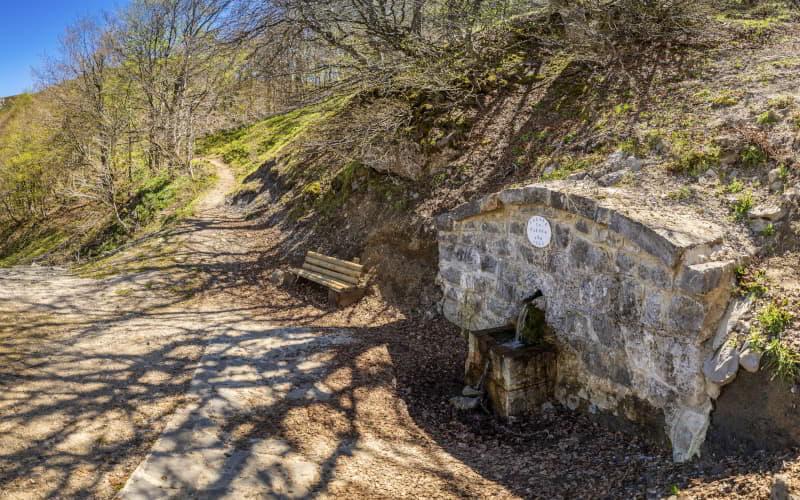
Winter is the perfect time to discover the industrial heritage of the Nalón Valley and its museums. It is a time to delve into the mining sociology, touring its most populated centres, to take part in the extensive programme of its theatres and cultural centres, and of course it is a time to go out for tapas, as the "chigre" culture is more alive here than anywhere else. But winter is also the time to dip your spoon in a good hot dish. Make a note of these four gastronomic festivals (all of them declared to be of Regional Tourist Interest), which will leave you speechless and your stomach full:
Turnip Gastronomic Days, in Sotrondio (first weekend in November). Turnip stew with compango, followed by tripe and casadielles.
Jornadas de les Cebolles Rellenes, in El Entrego/ L'Entregu (end of November). Onions stuffed with tuna with its glorious sauce.
Jornadas de los Pimientos Rellenos (Stuffed Peppers Festival), in Blimea (early December). Peppers stuffed with meat or tuna, baked or casseroled, an exquisite dish.
Fabada Days, in La Felguera(December). Local beans and first-class compango, a dream come true.
In short, the Nalón Valley is a place to discover without haste, with good boots, eyes wide open, a trained palate and, always, with the willingness to stay a little longer.
Images
Map
What to see
- Redes Natural Park and Biosphere Reserve in Caso and Sobrescobio.
- Alba Route.
- Museum-Birthplace of Armando Palacio Valdés in La Pola Llaviana/Pola de Laviana (Laviana).
- Museum of Mining and Industry in L' Entregu/El Entrego (San Martín del Rey Aurelio).
- Valle de Samuño Mining Ecomuseum in El Cadavíu, Ciañu (Langreo).
- Iron and Steel Museum in La Felguera (Langreo).
- Map of the Nalon Valley Region.
- Top 10 things to see and do in the Nalon Valley.
- Top 10 things to see and do in the Redes Natural Park.

